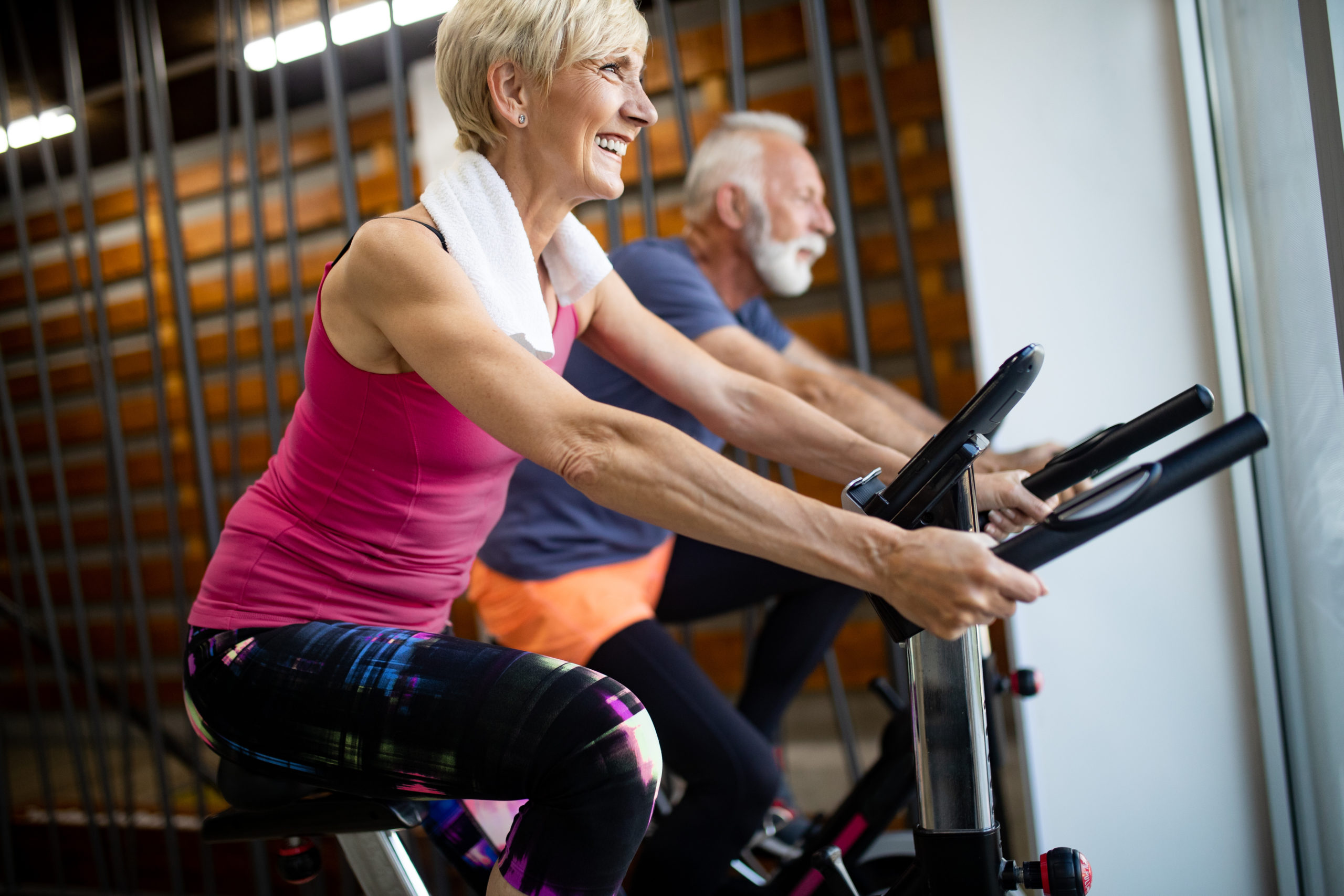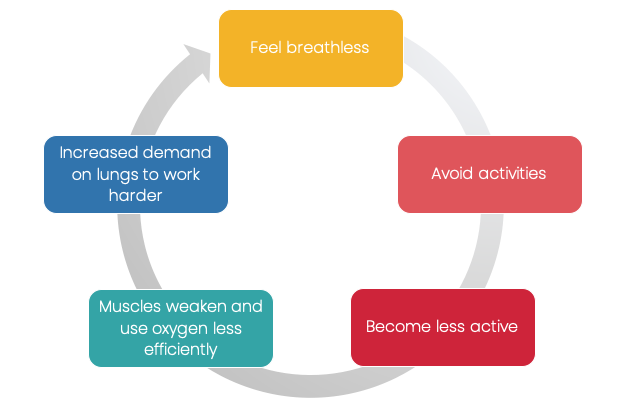
PULMONARY REHABILITATION
Pulmonary rehabilitation (PR) is a structured program consisting of exercise as a cornerstone feature, education about chronic lung disease and self-management, nutritional counselling and intervention, psychological and social support, and smoking cessation assistance. The graphic below depicts the various intervention components of PR which allows the program to be tailored to meet each individual’s needs.

It is the the coordinated bundle of tailored interventions and the intensity of the program that underpin the benefits gained from completing PR. Pulmonary rehabilitation is provided by a team of health practitioners involving doctors, nurses, physiotherapists and other allied health professionals such as dieticians, psychologists or exercise physiologists. More information about PR can also be learnt through Lung Foundation Australia.
“I wish I was told earlier about the benefits of pulmonary rehabilitation as I found the program very helpful – maybe doctors don’t know how useful it actually is. Anybody with COPD should have the opportunity to participate in such a program.”
– Josefina, who has COPD
Comprehensive information for healthcare professionals regarding the design and delivery of PR programs can be found at the Pulmonary Rehabilitation Toolkit.
Pulmonary rehabilitation is tailored to your preferences, goals and abilities following a comprehensive baseline assessment.
The overall aims of PR are to:
- Reduce the burden of symptoms
- Improve your quality of life
- Reduce the risk of hospital admissions
- Optimise the person’s mental and emotional wellbeing
- Enhance fitness and nutritional status
- Empower the individual for behaviour change
- Improve the person’s ability to cope with flare-up and stable stages of the disease
PR helps break and reverse the progressive cycle of inactivity, deconditioning and increased symptoms such as breathlessness and fatigue.

Program structure
Duration: The length of a PR program can vary from country to country, but often runs between 4-12 weeks, attending at least twice per week. In Australia, typical PR is 8 weeks, twice per week. In other countries it can be 12 weeks 3 times per week, followed by 12 weeks twice per week.
Supervision: Most PR programs are supervised by a qualified healthcare professional with expertise in exercise testing and prescription. This is typically a physiotherapist but may also be an exercise physiologist, nurse or other adequately trained professional.
What to expect: The first session is usually focused on getting to know the status of your health and psychosocial well-being through a range of assessments. These typically include interviews by the program’s doctor and nurse and an exercise test like a walking activity to provide baseline information for further exercise prescription in the program. The team then collaborates with you to make further arrangements for other health professionals to be involved in your rehabilitation program based on needs arising from these assessments, and your rehabilitation goals.
Interim sessions will be focused on intervention mainly comprising exercise therapy, and education presentations and discussions with fellow rehabilitation participants. Re-assessments will be completed at the end of the program to measure your progress and determine how to address ongoing needs and goals.
Setting
Pulmonary rehabilitation is traditionally delivered in a healthcare setting such as a hospital outpatient department or community rehabilitation or health centre. In recent years, the rehabilitation landscape has evolved to include alternative models of delivery such as home-based rehabilitation (with varied degrees of supervision), remotely supervised rehabilitation (or ‘tele-rehabilitation’) and online self-paced rehabilitation. More information regarding these models is described here.
Supporting evidence
A large body of research evidence consistently supports pulmonary rehabilitation as a highly effective treatment for many people with COPD. Its benefits are, on average, of a large enough scale across many different aspects of life. Examples of some of these benefits include:
- Improved ability to exercise
- Improved quality of life
- Improved symptoms
- Improved mental health and social engagement
- Reduced risk of future flare-ups & hospitalisations
- Reduced risk of premature death
View a pulmonary rehabilitation participant’s perspective:
Pulmonary rehabilitation after a lung flare-up
While you are in hospital, a healthcare professional such as your physiotherapist or doctor may talk about referring you to pulmonary rehabilitation after discharge. Many people find the idea of exercising confronting, particularly while you are still recovering from the increased symptoms of your flare-up or if you have not done much exercise in the past. Take your own time to consider this advice carefully, and raise any concerns about engaging in rehabilitation with your healthcare team. Learn about overcoming ‘barriers’ to rehabilitation.
Pulmonary rehabilitation is one of the most effective treatments for improving symptoms, exercise tolerance and quality of life for people with COPD, including when it is performed after a recent lung flare-up.
“Truthfully, I was quite anxious about doing the rehab program after being in hospital. Told them it was too soon. But my wife made me go, and I’m glad I did. It really helped.”
– Robert, who has COPD
Maintenance rehabilitation
If you have already completed pulmonary rehabilitation, you might have ongoing involvement in a maintenance program. These may have a similar structure to PR or may involve less frequent sessions. They often comprise fewer intervention components compared to PR, such as exercise-only sessions. If you currently attend a maintenance program, you may need to repeat PR if you have had a recent lung flare-up. Research evidence suggests gains for people with COPD who repeat PR.
Pulmonary rehab can be repeated, particularly after lung flare-ups. Discuss if this is suitable for you with a healthcare professional.